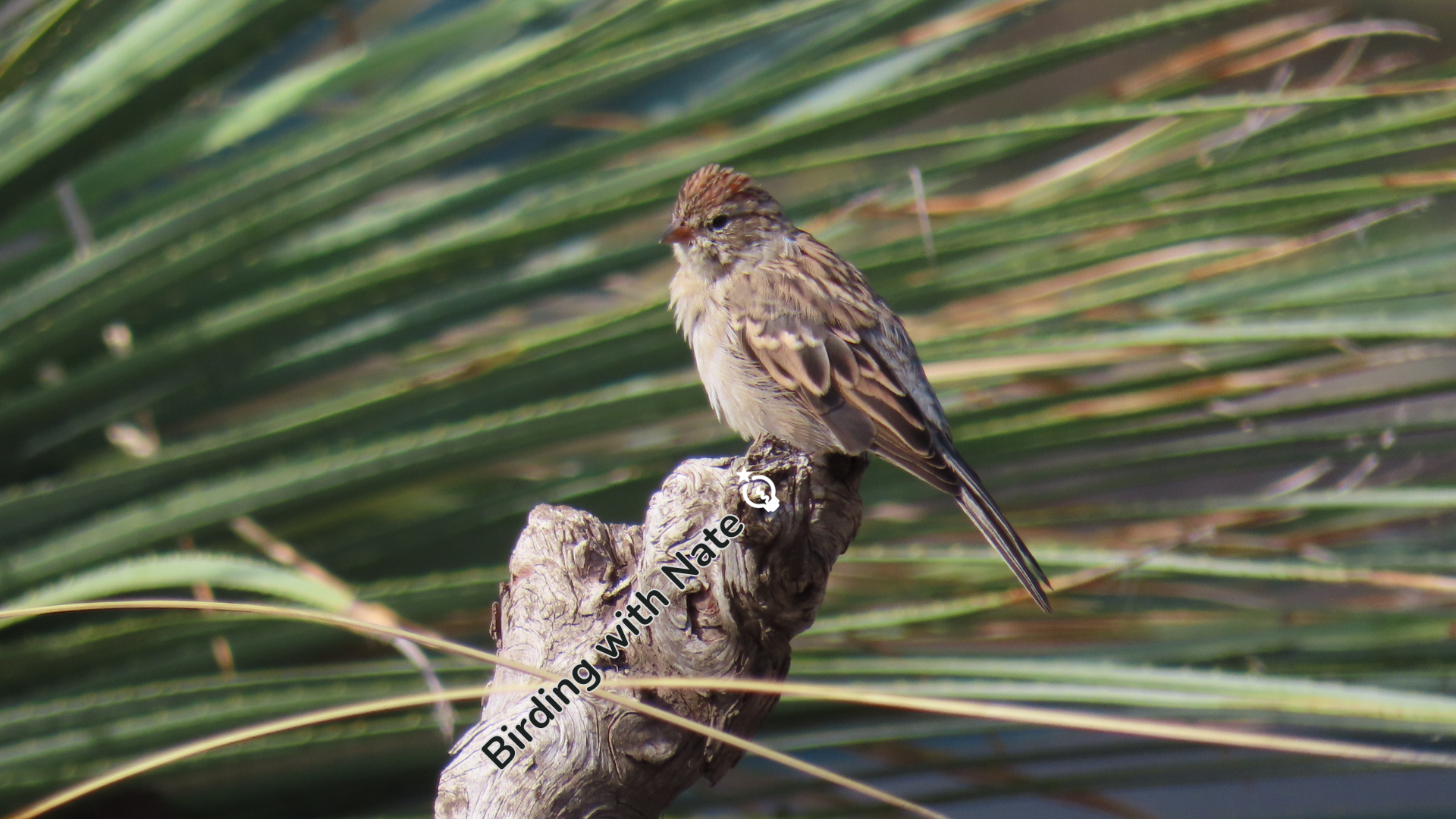Birding With Nate — Over 50 Species Spotted at ScienceWorks
Birding with Nate
Over 50 Species Spotted at ScienceWorks!

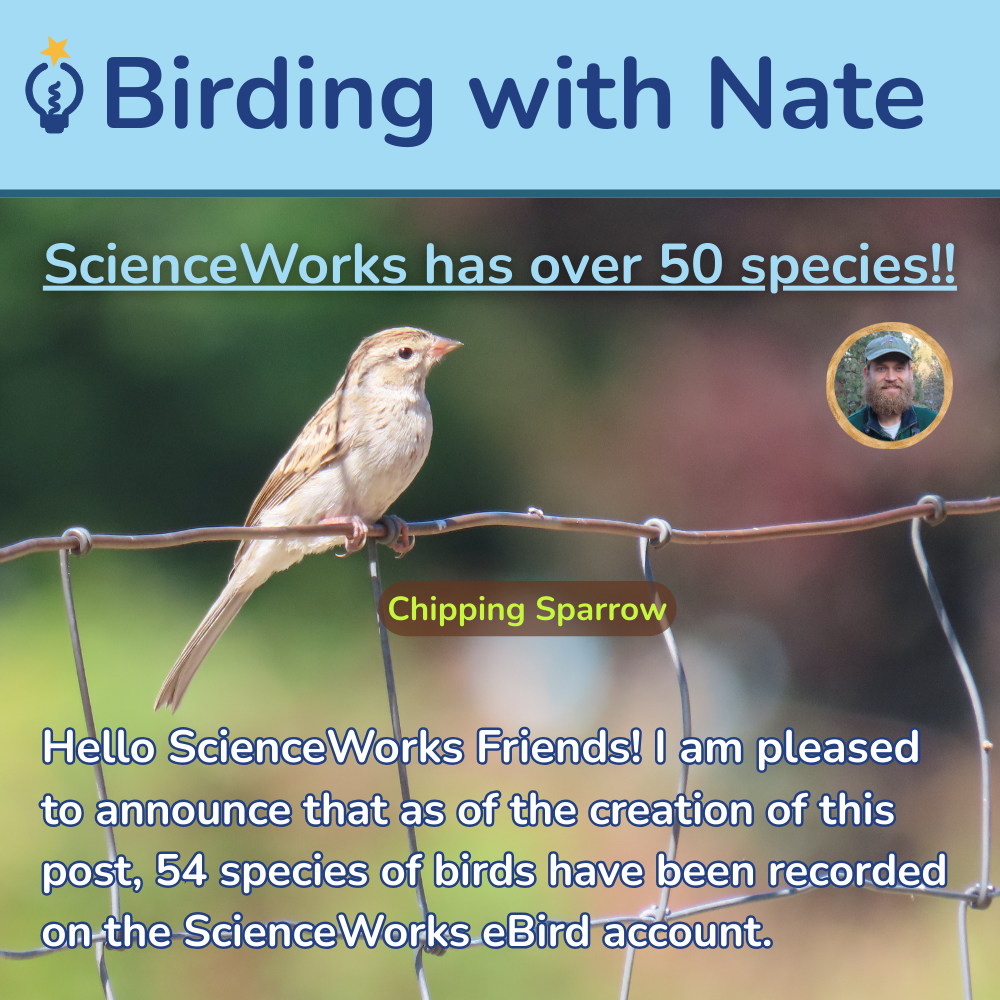
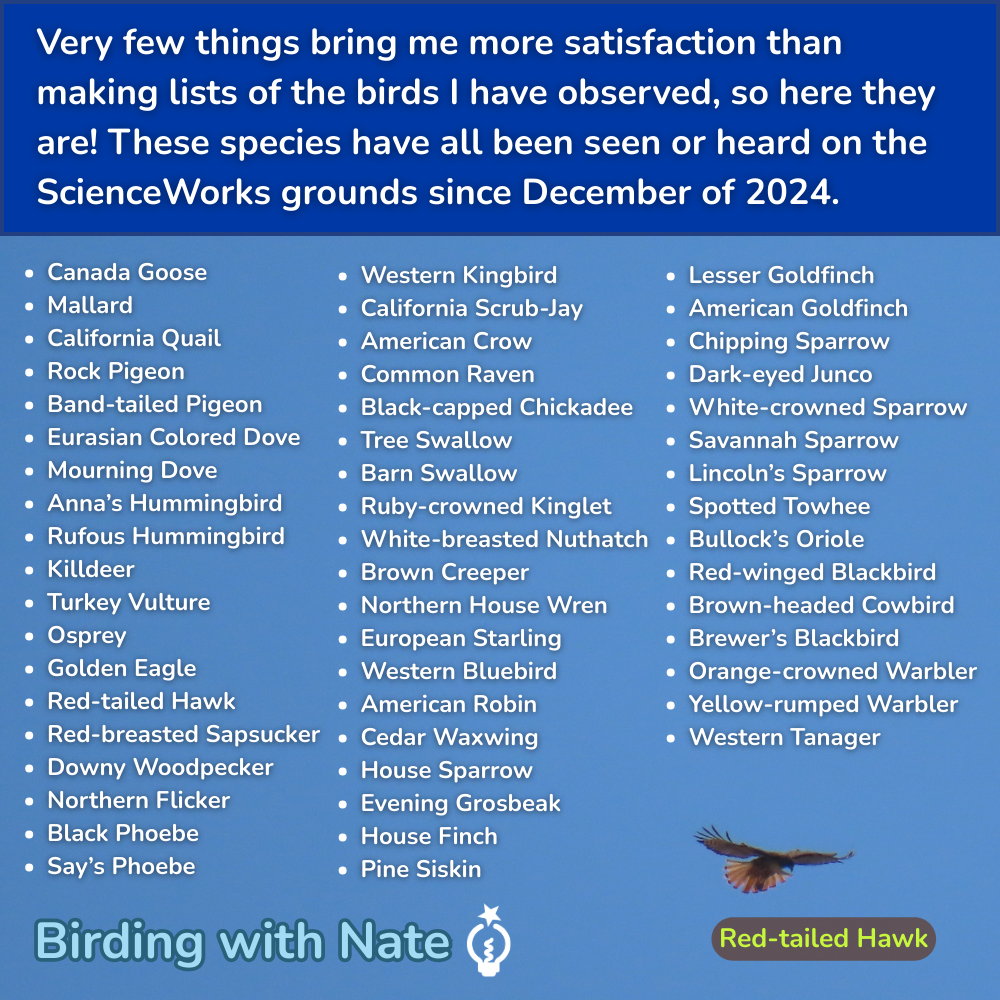

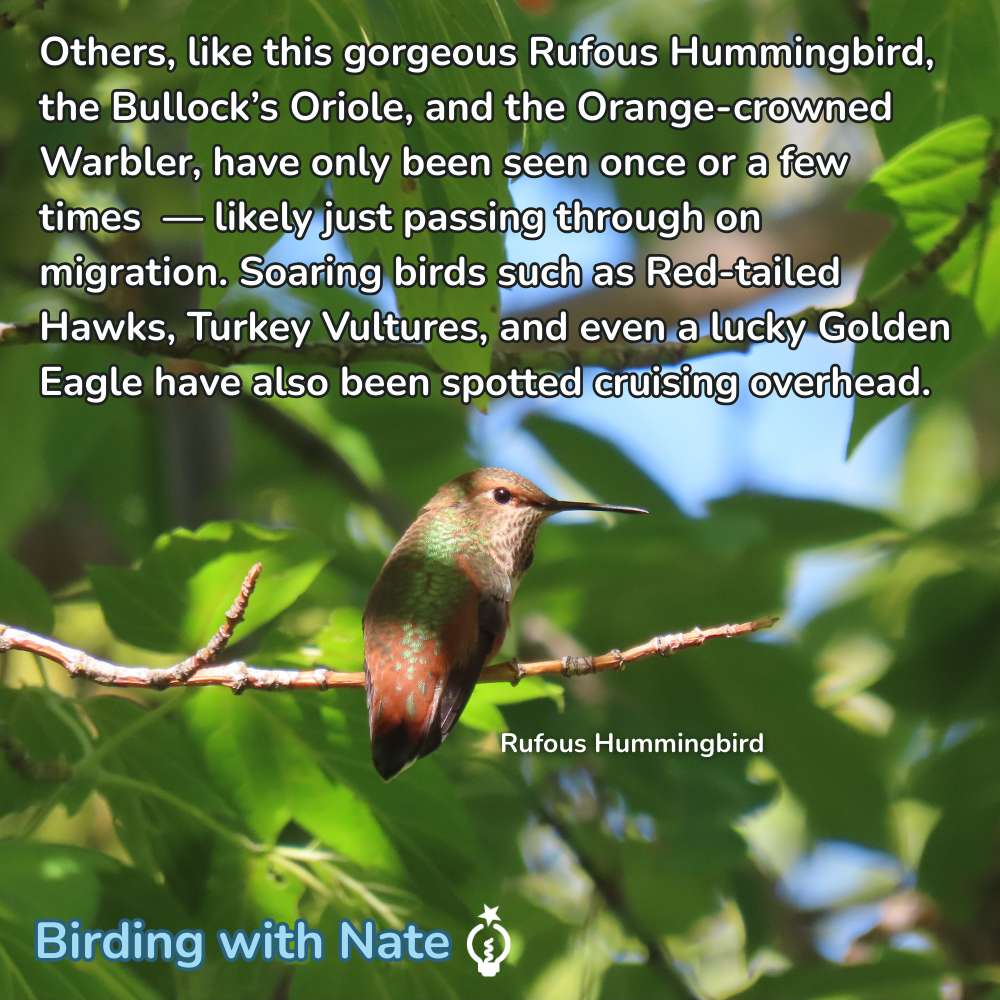
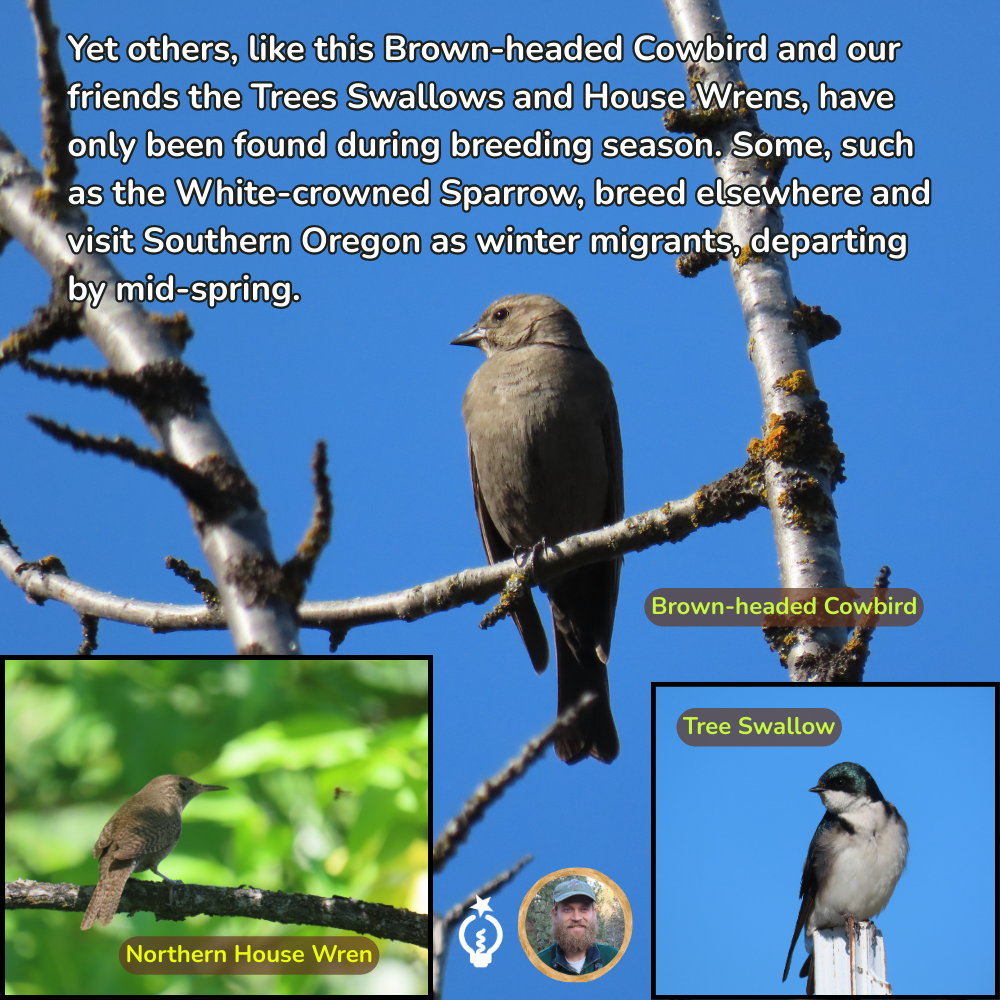
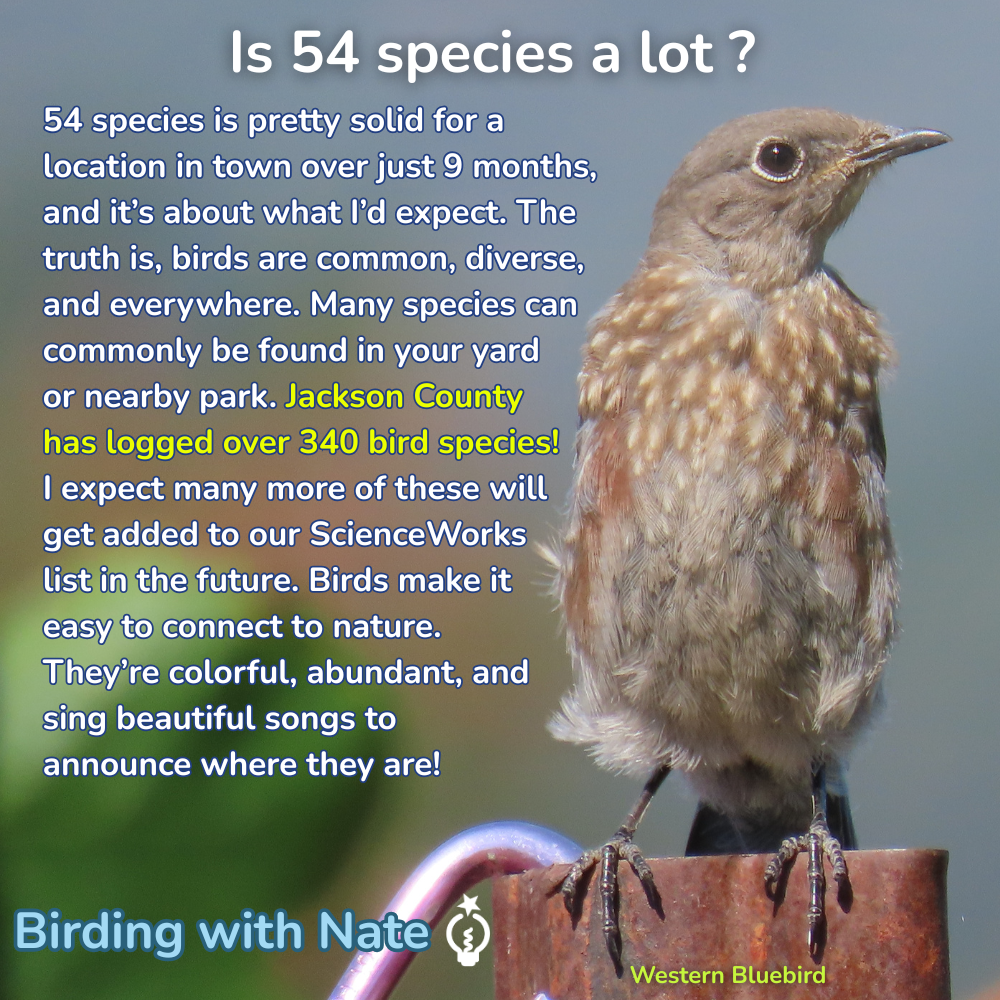

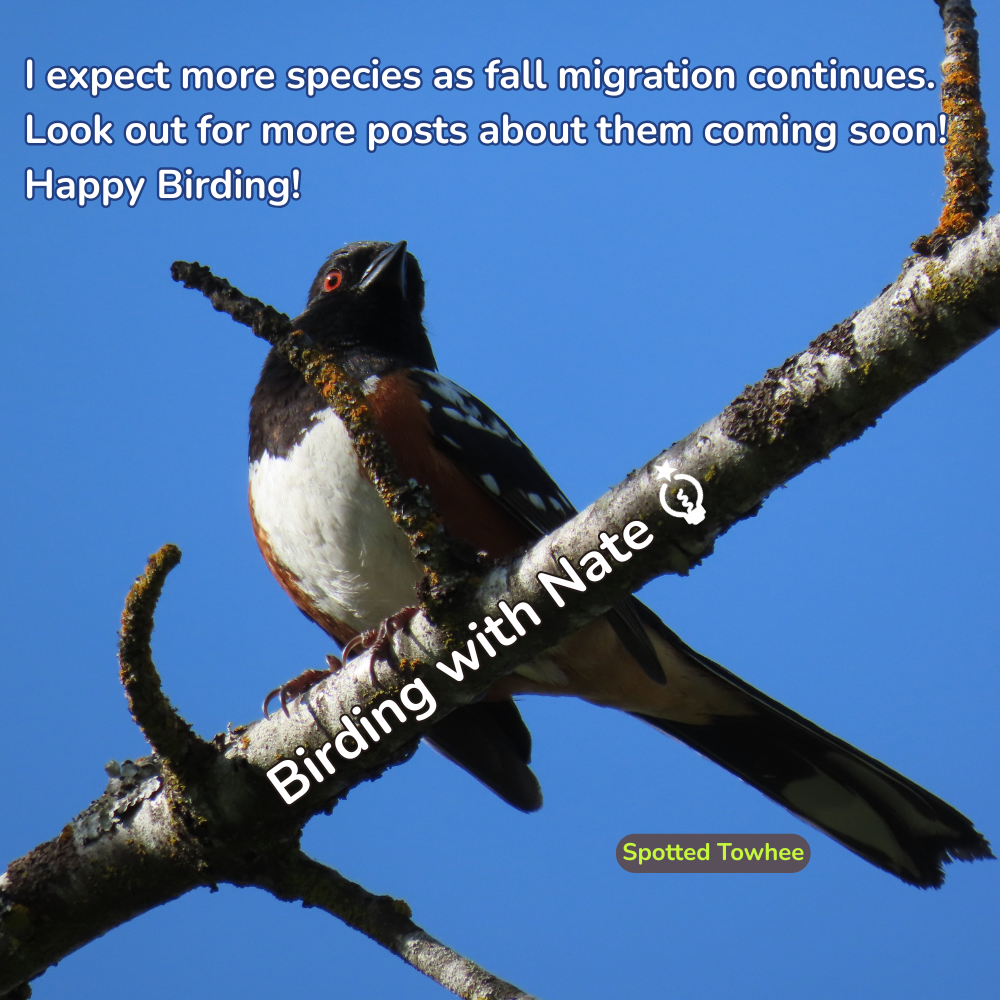
Hello ScienceWorks friends!
I am pleased to announce that as of the creation of this post, 54 species of birds have been recorded on the ScienceWorks eBird account.
Very few things bring me more satisfaction than making lists of the birds I have observed, so here they are! These species have all been seen or heard on the ScienceWorks grounds since December of 2024.
- Canada Goose
- Mallard
- California Quail
- Rock Pigeon
- Band-tailed Pigeon
- Eurasian Colored Dove
- Mourning Dove
- Anna’s Hummingbird
- Rufous Hummingbird
- Killdeer
- Turkey Vulture
- Osprey
- Golden Eagle
- Red-tailed Hawk
- Red-breasted Sapsucker
- Downy Woodpecker
- Northern Flicker
- Black Phoebe
- Say’s Phoebe
- Western Kingbird
- California Scrub-Jay
- American Crow
- Common Raven
- Black-capped Chickadee
- Tree Swallow
- Barn Swallow
- Ruby-crowned Kinglet
- White-breasted Nuthatch
- Brown Creeper
- Northern House Wren
- European Starling
- Western Bluebird
- American Robin
- Cedar Waxwing
- House Sparrow
- Evening Grosbeak
- House Finch
- Pine Siskin
- Lesser Goldfinch
- American Goldfinch
- Chipping Sparrow
- Dark-eyed Junco
- White-crowned Sparrow
- Savannah Sparrow
- Lincoln’s Sparrow
- Spotted Towhee
- Bullock’s Oriole
- Red-winged Blackbird
- Brown-headed Cowbird
- Brewer’s Blackbird
- Orange-crowned Warbler
- Yellow-rumped Warbler
- Western Tanager
Some of these species are common on the ScienceWorks grounds year-round.
Others, like this gorgeous Rufous Hummingbird, the Bullock’s Oriole, and the Orange-crowned Warbler, have only been seen once or a few times — likely just passing through on migration. Soaring birds such as Red-tailed Hawks, Turkey Vultures, and even a lucky Golden Eagle have also been spotted cruising overhead.
Yet others, like this Brown-headed Cowbird and our friends the Trees Swallows and House Wrens, have only been found during breeding season. Some, such as the White-crowned Sparrow, breed elsewhere and visit Southern Oregon as winter migrants, departing by mid-spring.
Is 54 species a lot? 54 species is pretty solid for a location in town over just 9 months, and it’s about what I’d expect. The truth is, birds are common, diverse, and everywhere. Many species can commonly be found in your yard
or nearby park. Jackson County has logged over 340 bird species! I expect many more of these will get added to our ScienceWorks list in the future. Birds make it easy to connect to nature. They’re colorful, abundant, and sing beautiful songs to announce where they are!
54 species is pretty solid for a location in town over just 9 months, and it’s about what I’d expect. The truth is, birds are common, diverse, and everywhere. Many species can commonly be found in your yard or nearby park. Jackson County has logged over 340 bird species! I expect many more of these will get added to our ScienceWorks list in the future. Birds make it easy to connect to nature. They’re colorful, abundant, and sing beautiful songs to announce where they are!
Want to contribute to the ScienceWorks eBird hotspot? You can make your own eBird account and submit lists to our hotspot. If you’re a photographer but aren’t confident in your bird IDs, email pics to me at nate@scienceworksmuseum.org, and I will ID them for you. I can walk you through how to upload them to eBird and/or use them for future social media posts with permission and credit.
I expect more species as fall migration continues. Look out for more posts about them coming soon! Happy Birding!
And don't forget to add your own bird sightings to the ScienceWorks eBird Hotspot!






